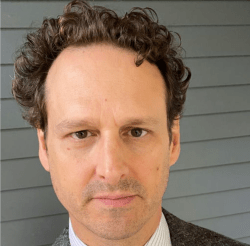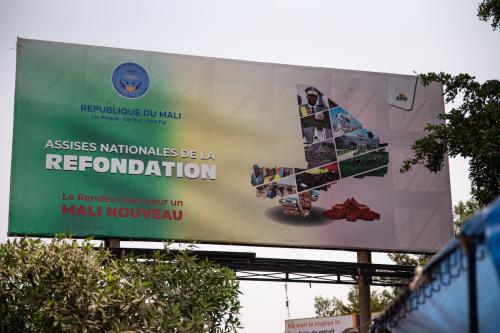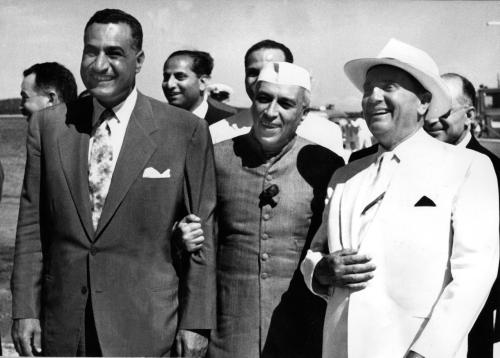On January 20, 2025, President Donald Trump signed an executive order imposing a 90-day freeze on foreign development assistance while launching a top-to-bottom review of all aid programs. The order was followed by a stop-work directive that paused most U.S. aid-supported projects worldwide, with only a few exceptions.
The consequences for global health were profound since the United States is the largest provider of health aid. An analysis by the Kaiser Family Foundation of official development assistance (ODA) recorded by donors in the Creditor Reporting System database estimated that in 2023, the U.S. contributed about $12.9 billion toward global health activities, which was 42% of the total ODA for health. The stop-work directive had major public health consequences in countries that receive U.S. aid for health, including the sudden closure of clinics, hospitals, and clinical trials and disruptions in HIV, tuberculosis, and malaria programs that risk resurgence of these three diseases.
Before the executive order, 73% of U.S. bilateral assistance for health was channeled through the United States Agency for International Development (USAID), which has now been largely dismantled. The Trump administration has terminated over 90% of all USAID programs, and over 5,600 USAID workers have been fired or placed on leave. The dismantling of USAID has also shuttered much of the U.S. President’s Emergency Plan for AIDS Relief (PEPFAR), a program launched by George W. Bush that has saved more than 25 million lives, as 60% of PEPFAR assistance is implemented by USAID. Tracking efforts, such as the PEPFAR Impact Tracker, are already estimating significant increases in HIV transmission and HIV-related deaths as a direct result of the funding freeze.
The sudden withdrawal of U.S. funding for global health marks one of the fastest and largest donor exits in history. The Center of Policy Impact in Global Health at Duke University has studied the transition of countries out of health aid, in partnership with other universities and think tanks. Below is a summary of five key lessons from this research that may help to inform how the sudden U.S. aid freeze could impact recipient countries.
1. Some countries are more vulnerable to backsliding after transition
One study examined what makes countries ready to transition from concessional health aid provided by agencies like the International Development Association (IDA) and Gavi, the Vaccine Alliance (Gavi). The analysis compared two cohorts of countries: a “previous” cohort of nine middle-income countries (MICs) that transitioned from IDA between 2010 and 2015, and an “upcoming” cohort of 11 MICs, including Nigeria and Pakistan, that were anticipated to graduate from IDA, Gavi, or both from 2020 onward. The study compared these two cohorts of MICs across five categories: macroeconomic conditions, health financing, health performance, governance, and levels of poverty and inequality. The upcoming cohort faced greater challenges—lower per-capita income levels, higher debt, weaker governance, less effective health systems, and greater inequality—making their transition from concessional donor financing more difficult. The study highlighted the importance of planning and developing gradual aid transition strategies, including phased reductions in aid and stronger international partnerships to mitigate the negative effects of sudden funding losses.
2. The strength of the health system is critical
A scoping review on how the withdrawal of donor assistance affects health systems in MICs found that if a country’s health system is strong prior to transition, it is more likely that the country can fully take over the funding and management of its health programs without disease resurgence or backsliding. The key factors that ensured successful transitions from donor assistance included proactive planning, strong government commitment, pre-transition investments in a country’s financial, technical, and logistical capacity, and the development of comprehensive transition strategies to mitigate adverse effects and ensure the continuity of essential health services.
3. Sudden, poorly planned exits cause disease resurgence
An examination of the consequences of donor withdrawal from HIV programs, particularly on key populations such as sex workers, men who have sex with men, people who inject drugs, and transgender individuals, found that abrupt donor exits without a plan for the government to take over the HIV program can lead to service disruption and HIV resurgence, particularly in key populations. In Romania, for example, the sudden departure of the Global Fund to Fight AIDS, Tuberculosis and Malaria in 2010 caused HIV prevalence among people who inject drugs in the capital city to surge from 1.1% in 2009 to 53% in 2013. This study also found that successful transitions occurred when countries implemented comprehensive transition plans, ensured strong government ownership of their HIV program, and established social contracting with civil society organizations to sustain prevention and treatment services to key populations.
4. Relying on just a few donors is risky
A study of the donor landscape in Kenya found that just four donors—the United States, the Global Fund, the United Kingdom, and Gavi—contributed nearly 90% of all external health aid. In this situation, any large change by one donor will affect resources available to Kenya’s health sector. In financial year 2020-21, PEPFAR financed 60% of all Kenya’s HIV programs. In the last two decades, PEPFAR invested around $8 billion in HIV programs in Kenya, providing antiretroviral (ARV) treatment to 1.3 million people and saving millions of lives. In 2020, 75% of ARVs and 67% of HIV test kits were funded by donors, along with significant salary coverage for HIV health workers. Since the U.S. aid freeze, the provision of preventive and treatment services, including ARVs and HIV testing, has been disrupted. Meanwhile, Kenya has laid off around 40,000 health workers, showing the risks of relying on a single donor.
5. Donors may make decisions based on strategic interests
An examination of how bilateral donors adjust their ODA when multilateral donors, such as Gavi, withdraw support when recipient countries reach graduation thresholds found that bilateral donors took their cue from how multilaterals behave, reducing their aid following multilateral exits except in countries where they have strategic interests. Indeed, in countries where donors have strategic interests, such as geopolitical alliances or economic ties, bilateral aid is more likely to continue or even increase, mitigating the impact of multilateral aid withdrawal. Countries with higher disease burdens, weaker health systems, and lower income levels are more vulnerable to negative impacts from donor transitions, especially if they lack strategic significance to bilateral donors.
A new normal of strategic bilateral donor assistance
The 90-day freeze on U.S. foreign aid was announced by the current U.S. administration to “reassess and realign assistance programs with American interests.” This is not the first time that a bilateral donor has shifted its priorities based on national interests. In June 2021, the United Kingdom (U.K.) government announced a 30% reduction in bilateral foreign aid, limiting support to 34 countries and cutting aid to 102 others. This decision followed the merger of the Department for International Development with the Foreign & Commonwealth Office, forming the Foreign, Commonwealth & Development Office, which now emphasizes aid aligned with national interests. This shift arguably prioritized strategic interests over the needs of the poorest and most fragile nations. For instance, countries like China and India, where aid programs had been previously phased out, were put on the recipient list, while many low-income and conflict-affected countries faced cuts. And on February 25, 2025, U.K. Prime Minister Keir Starmer announced a further 40% in the U.K. aid budget.
If these trends in donor exits persist, aid-receiving countries must accelerate progress toward wholly financing their healthcare systems to preserve health gains achieved over the past decade. For example, the Nigerian government recently announced its plans to absorb 28,000 health workers formerly employed by USAID. Previous research suggests that with proper planning and prioritization, the incremental healthcare costs could be covered by domestic resources from expected economic growth in lower-middle-income countries. However, some low-income countries and fragile and conflict-affected states will continue to need external aid in the near term. In addition to domestic resource mobilization, health policymakers have also identified improving the efficiency of health spending as a potential high-impact intervention that can mitigate the effects of donor exits.
Conclusion
As the global community assesses the fallout of the potential collapse in U.S. assistance for health, it is essential to develop strategies that reduce reliance on volatile and unpredictable donor funding. In the face of such uncertainty, a proactive approach to donor transitions will be critical to sustaining progress in global health. Most global health donors, including USAID and PEPFAR, had strategies in place for gradual, careful, planned phase-out and country graduation, which can lead to more sustainable transitions away from donor reliance. Transition readiness assessment tools can also be helpful in evaluating a country’s preparedness for transition, such as financial stability, health infrastructure, and governance. With strategic planning—such as strengthening domestic resource mobilization, improving governance, and fostering new partnerships—countries can build resilience and sustain progress.
The Brookings Institution is committed to quality, independence, and impact.
We are supported by a diverse array of funders. In line with our values and policies, each Brookings publication represents the sole views of its author(s).







Commentary
Navigating US global health aid cuts: What can past donor exits teach us?
March 25, 2025